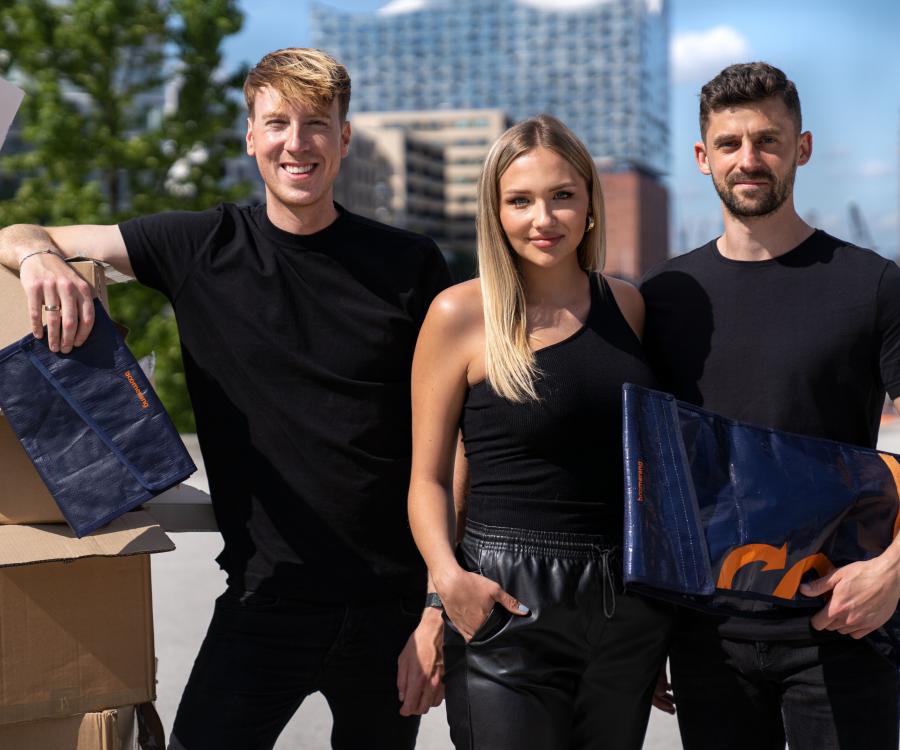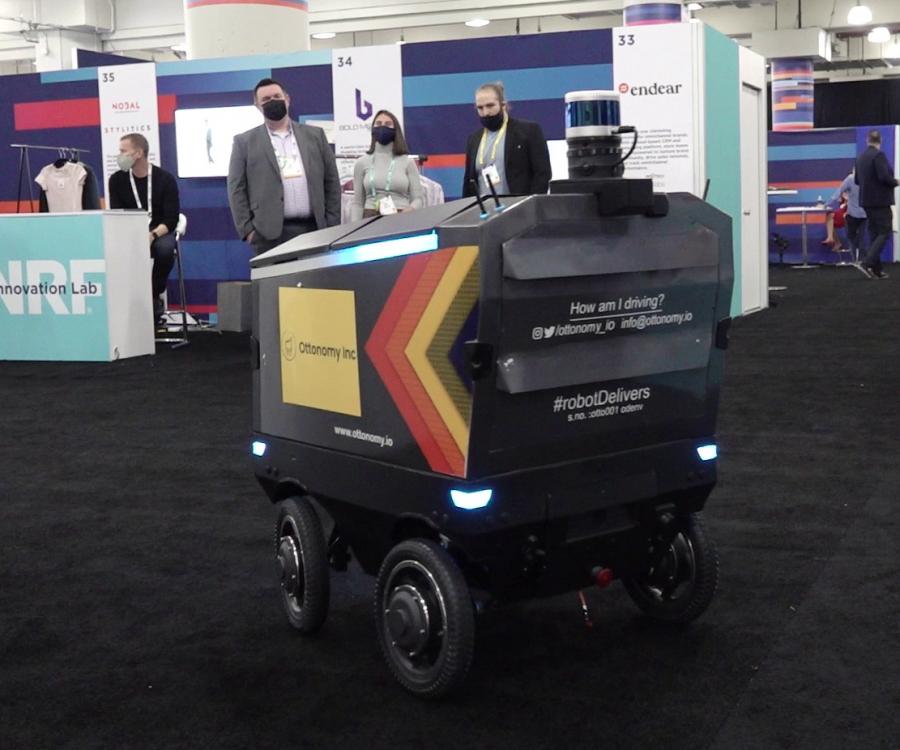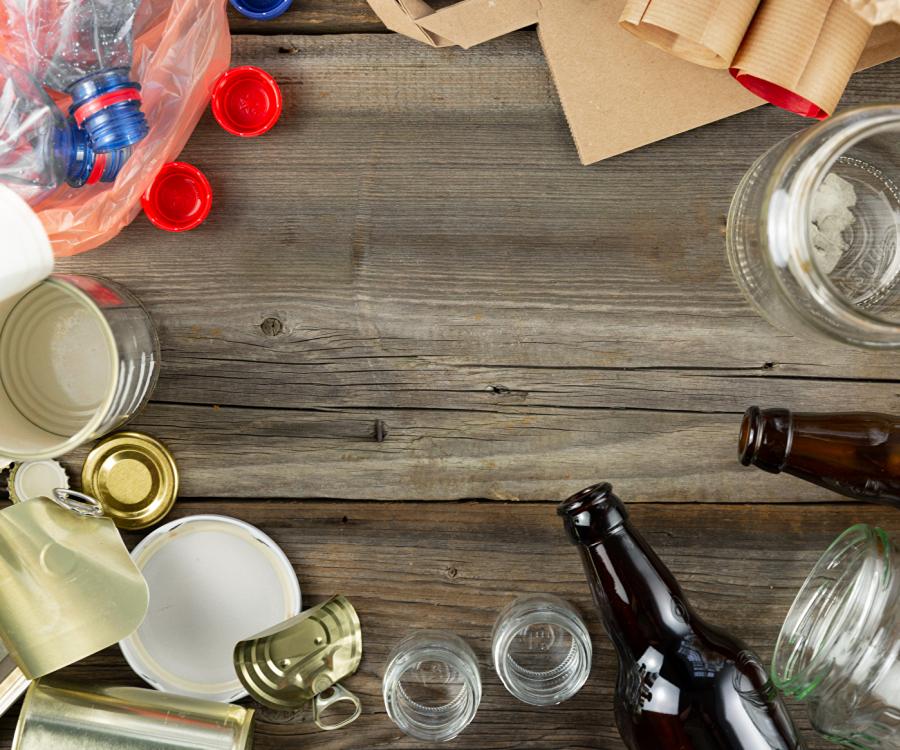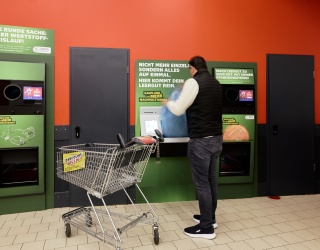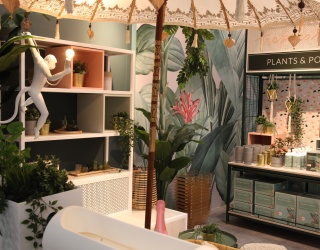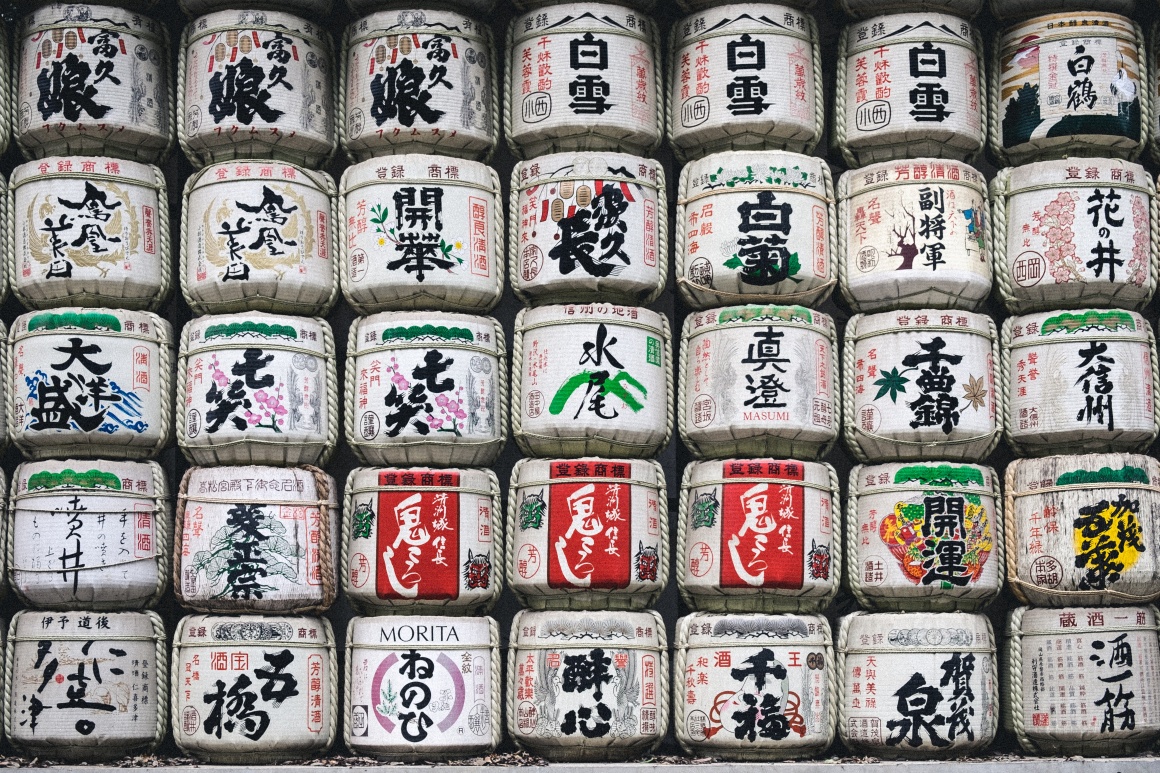
In response to new regulations, packaging industry exhibitors at the 17th LogiMAT are showcasing new developments and innovations in machine technology, methods for reducing the use of traditional materials, and brand-new materials.
As people become more environmentally conscious, manufacturer and consumer interest in sustainability is spreading to the packaging industry as well. Germany’s new Packaging Law, which took effect January 1, has also changed the rules of the game. First, it boosts demand for traditional recyclable packaging materials like cardboard sheets and boxes and the packaging technology they require. What’s more, “the new Packaging Law could serve as a catalyst for the development and deployment of new technologies, especially around plastic packaging, and establish a circular economy for plastics at the material level that brings together efficiency, environmental protection, and resource conservation,” predicts Kirstin Michels, an advisor for sustainable packaging solutions at the engineering firm “Clever eingepackt” in northern Germany, pointing to upcycling projects and technologies that reuse plastics from household recycling.
This background marks a key trend reflected by packaging industry exhibitors at the 17th LogiMAT. “International packaging industry representatives are presenting more than just innovative machine technology in Stuttgart,” explains LogiMAT Exhibition Director Michael Ruchty of EUROEXPO Messe- und Kongress-GmbH, which organizes the event. “Many of the solutions on display highlight resource-friendlier, optimized methods for using traditional materials and feature entirely new materials, reflecting the current trend toward circular economies of recyclables and the use of sustainable materials.”
Pregis GmbH (Hall 6, Booth A25), a subsidiary of the UK-based Pregis Europe, is introducing new packaging systems from the Easypack brand that work with 100 percent recycled paper. The PackmasterTM Pro and PackmateTM Pro models transform one- or two-play paper of varying strengths into durable paper cushioning, expanding the initial paper volume by a factor of up to 80. Kreiter GmbH (Hall 4, Booth A71) offers a pickup service for used paper and cardboard boxes, which it recycles as the raw material for paper cushioning. The company offers free pickup of recyclables within a 150 km radius, processes them into tear-resistant, dust-free cushioned padding under the Karopack® brand, then delivers them again – with custom logos or other promotional branding on request. The company even franchises to certified workshops that employ the disabled.
Priotega GmbH & Co. KG (East Entrance, Booth ES54) is presenting cArtù, a corrugated cushioning material that offers an alternative to traditional PE foam materials. Formerly made from cardboard, cArtù is now constructed from 100 percent recycled paper and comes in 8 mm to 20 mm thicknesses with open or closed corrugations. Kraus Maschinenbau GmbH (East Entrance, Booth ES70) is introducing a newly developed packaging machine for paper bags, which require less packaging volume and offer a green alternative to foil packaging. The device can accommodate various qualities of paper to produce custom bag sizes and branded bagging. By staging and automatically opening and labeling the bag, it also relieves workers of tedious tasks.
Sârmatec SRL (Hall 1 gallery, Booth OG19) and Walther Faltsysteme GmbH (Hall 6, Booth A15) are also turning to circular economies of recyclables. Sârmatec is presenting new custom-built foldable and stackable wire-mesh containers designed to be used and re-used in a circular economy for up to eight years, depending on the application. Walther is coming to Stuttgart with high-quality sustainable logistics containers made of unconventional materials. Visitors to LogiMAT 2019 can see the world’s first plastic folding box made of recycled materials and sunflower seed fibers, part of Walther’s Greenline+ series. The sunflower compound the company uses is a byproduct from agricultural production.
In the field of systems engineering, manufacturers are focused on automating processes and reducing volumes. Kern AG of Switzerland (Hall 2, Booth D08) is presenting PackOnTime@size, a system for custom packaging. A 3D scanner measures the products to be packaged and decides which size sheet of corrugated cardboard to pull into the machine and fashion into a box. The product is then placed into the custom packaging, and the box is sealed. This eliminates cutting scraps, lowers the amount of corrugated cardboard needed, and reduces the transport volume.
e3neo NeoPack Solutions SAS (Hall 5, Booth F80) and Neopost Shipping (Hall 2, Booth C15) are also showcasing solutions that customize packaging to the goods. Neopost is targeting e-commerce merchants with its CVP-500, which uses auto-boxing technology to measure, build, glue, weigh, and label user-defined corrugated cardboard packages in a seamless process that lasts only seven seconds and, according to the manufacturer, reduces box sizes by up to 50 percent compared to standardized boxes. NeoPack’s Cut’it lid application also aims to reduce box sizes by automatically adjusting the box height to the actual contents before attaching a lid with four flaps. The result is a smaller shipping volume, better stackability and fill rate on pallets, and improved packaging quality.
Industry professionals in Stuttgart will also have the opportunity to look at a wide range of new stretch wrappers. Hagenauer+Denk KG (Hall 3, Booth F67) is presenting its new HDconnect, an example of how technology can help optimize resource consumption: HDconnect uses a film prestretch system and sophisticated instruments to analyze the wrapping process and the film needed to wrap each pallet, then takes into account equipment parameters such as the turntable speed, prestretching, wrapping tension, and the number of wrapping layers to optimize the amount of film required. Manufacturers like Emba-Protec GmbH & Co. KG (Hall 4, Booth F25) are also designing more and more devices to use high-tech film, which can achieve the same or even superior cargo securement with up to 50 percent less material.
The exhibitors profiled above demonstrate how the packaging industry is developing solutions to satisfy current trends and the demands of a changing marketplace. “From procurement and consumption costs to quality of service and efficiency, there is a close link between logistics and packaging,” Ruchty concludes. “That’s why productivity gains in packaging and the realignment to future-ready, sustainable solutions and materials offer such a great potential for savings. Packaging industry representatives in Stuttgart are showing how these savings can be unlocked and how the industry is doing its part. In that sense, the 17th LogiMAT offers a kind of glimpse into the future.”


